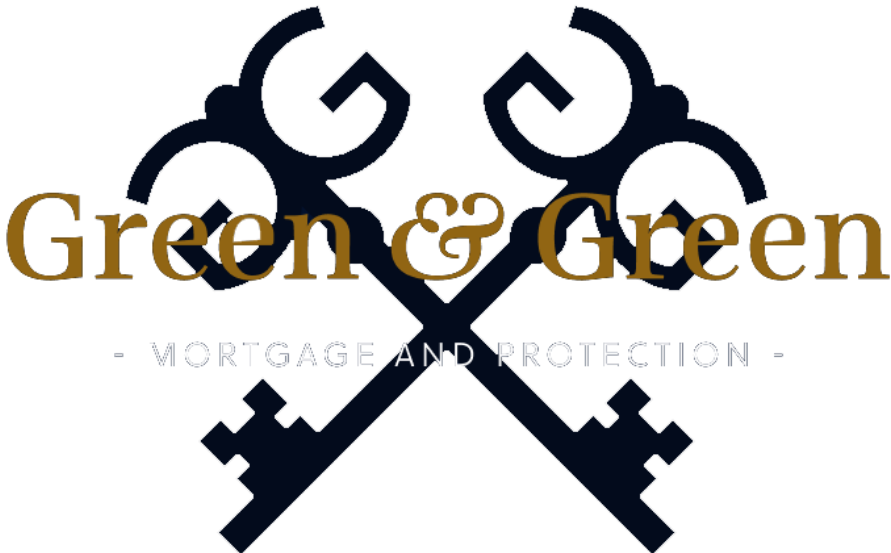Property Crash or Property Correction?
Posted on 25th July 2022 at 11:07
Property crash or property correction?
There is much talk now that 2022 will see a property crash much like 2008. This talk is coming from the
aggressive and month on month house price growth and the idea that this is not sustainable. Since the
start of the global pandemic in March 2020 the UK has seen aggressive double digit house price growth
for back-to-back years, and when you add this the eye watering inflation and rising cost of living, many
see this growth and trajectory leading to a housing market crash.
At the time of writing this (July 2022) there are 2 main polarising viewpoints on what is going to happen
on at the back end of this year and they are that the market is going to crash or the market is going to
correct itself. There are huge differences between the 2. A property crash results in a large double digit
price drop and repossessions. A correction is when prices stabilise, interest rates return to an average
level and the average number of property transactions return to normal levels.
There are many indicators and moments that lead to a crash, and we will talk through each of those and
see how they differ from 2008 to now and how we can expect a correction rather than a crash.
The cost of borrowing
One of the biggest factors leading to how many people buy a property is how much it is going to cost
them and how they can maintain their mortgage payments. The cost of borrowing is predominantly
determined by the interest rate on the mortgage amount. If the mortgage you need to buy the home you
love is too expensive, this squeezes people out of the market, and if the mortgage you currently hold is
now too expensive you cannot maintain these payments which may lead you to sell your home or be
repossessed.
In 2008 the average Bank of England base rate was 5.75% which is 4% higher than we are seeing in
2022. This squeezed the income of many homeowners and increased their mortgage payments to levels
that they could not maintain, and this led to mass numbers of forced house sales and repossessions as
borrowers fell behind on their mortgage payments.
Mortgage affordability checks
In the years running up to 2008 many banks and lender in the US and UK relaxed their mortgage
affordability checks to ensure that they could capture their piece of the ever-growing mortgage market.
Those that took out mortgages in the run up to 2008 will remember ‘self-certification mortgages’ in which
you could tell the lender that you earn any amount of money per year, and they couldn’t ask for a single
shred of evidence to support that claim.
Since 2008 banks and lenders are no longer allowed to provide these types of mortgages, instead they
are capped to lending at 4.5 -5.5x your annual income and you must provide substantial evidence of your
income in the form of multiple payslips and at least 2 years tax returns for self-employed applicants.
These stricter affordability checks ensure lenders only borrow what is deemed responsible and an
amount that is realistically possible to be repaid on their amount of income.
Since 2008 lender criteria has changed dramatically, with financial conduct authority (FCA) has
implemented many regulation changes in terms of lending practices and responsible lending checks.
Things such as debt to income checks means lenders must check how much debt potential borrowers
currently hold in comparison to their income to see how much disposable income they must spend on a
mortgage and also to track their spending habits. The implementation of internal credit scoring systems
with all lenders changed the way lenders lend to borrowers. Borrowers are given a score depending on
things such as the size of the mortgage compared to their income, the level of indebtedness, loan to
value, source of deposit and size of the deposit.
Mortgage lending
A big change since 2008 is the amount of money you can lend based on the value of the property you
wish to buy. Today all lenders require you to put down a deposit to show your commitment to the
purchase and to create a buffer on house prices in the event of a downturn in property prices. Back in the
‘good old days’ before the 2008 crash you could lend anywhere from 100 -120% of the value of the
property you intended to buy so that you didn’t need a deposit and could even lend more than the
property was worth, so you had money to renovate the property, or even buy a car or go on holiday with
no questions asked!
This risky practice immediately put people into negative equity if they borrowed more than value of the
property or if the property decreased in value. This caused many borrowers to become ‘mortgage
prisoners’ which meant they could not move mortgage or sell their property because their outstanding
debt was more than the value of their home. This led to many people being repossessed or needing to
take out further borrowing to repay their mortgage causing spiralling debt levels in a time of rising interest
rates.
Financial law changes
Once the dust had settled after the 2008 financial crisis that rocked the world, US and UK implemented
many financial regulation and legislation changes to help prevent a similar catastrophic event like that to
happen again. The financial crash of 2008 began mainly in part due to irresponsible speculative
investments created in the US, where financial institutes packaged and sold on subprime mortgages and
loans made to borrowers who were very unlikely to pay them back to investors. As these mortgages and
loans were never paid back the financial institutes made huge losses, many properties lay empty with
very few buyers in the market to buy them caused the market to crash first in the US and the ripple effect
didn’t take long to make its way to the UK.
Since then, the US government tightened regulations on speculative trading and enforced stricter
auditing and governance measures to ensure financial institutes disclose all of its business dealings.
New governing bodies were created in order to keep a closer eye on financial institutes and how they
conducted business with increased standards to how they lend money, how they trade and how much
liquid cash they must hold.
Oversupply, under demand
Basic economics dictates that the more demand a product or service has, and that product or service is
limited in supply this drives up the price as people are willing to pay more for it. The same applies for
property, if there are many people wanting to buy a property because they can, its easy and its desirable
then prices will rise. The same works in the opposite direction, where few people want to buy property
and you have many people needing to sell their property and there are more properties on the market
than buyers, you face falling prices. In the run up to the 2008 crash the market was awash with
properties for sale and very few buyers. The pool of buyers was limited as mortgages became
unaffordable and prices were too high, and people were selling because they had borrowed more than
they could afford, were in negative equity and their monthly mortgage payments become too much to
maintain.
Repossessions
A key indicator that we are experiencing a crash is the number of repossessions. Repossessions are a
key sign that mortgages are unaffordable, house prices are falling, and the level of debt households have
is not sustainable. A repossession occurs when a borrower cannot keep up their payemnts and the
lender takes the home from them to sell it to repay the outstanding mortgage balance. The main issue
we saw in 2008 was even when lenders were repossessing homes, the sale of the property was not
enough to clear the outstanding mortgage due to the size of the outstanding mortgage and the price the
property achieved when it was sold.
When these forced sales occurred, they occurred at a time when very few people wanted to buy a home
because prices were falling like a stone and the cost of getting a mortgage was too expensive for many.
So lenders were selling properties quickly for less than what was owed, which put additional financial
pressures on banks and lenders.
In the years running up to the pinnacle of the crash in 2008 (2006 – 2008) the average number of
repossessions was 28,000 per year, in 2022 we see an average of 3,000 repossessions a year. This
helps us to see that the UK housing market isnt as unstable today as it was in the run up to the financial
crash of 2008.
Unemployment
People need jobs to fund their lifestyle including paying household bills and their mortgage, as well as
everything else. The monthly mortgage payemnt will be the largest monthly payment many people in the
UK will have. When you lose your job and your income it becomes very difficult to pay your mortgage.
When people cannot keep up with their mortgage payments this leads to lenders repossessing homes.
In 2008 the unemployment rate was 6.4% of the whole population, in 2022 we currently sit at 3.8%,
which shows that the rest of the economy is strong and the main driver behind payment your mortgage
remains strong.
House price growth
What goes up must come down right? This factor is one if the main drivers of customer psychology
believing a crash is looming this year. House price growth leading up to the crash of 2008 averaged
11.8% per year for numerous years until the bottom fell out of the market. Fast forward to 2022 and we
are experiencing average growth of 16.9%. Many believe this cannot continue, and they are right. No
market can continue to increase in value at such a rate for such a length of time before there is a change
in the values or the rate things change.
If you look at any markets in history whether that be the stock market or cryptocurrency, prices change all
the time depending on buyer sentiment, supply and demand and the ease in which you can buy the
asset. The housing market will be no different as we can expect to see a ‘cooling’ of the housing market.
Price cooling is by no means the same as a crash. A crash is the result of many of the things we have
covered above e.g., irresponsible lending, borrowing becoming too expensive and repossessions.
Now there is no telling when exactly the correction will take place, or how it will play out. But what we can
say with confidence is that we don’t foresee a full-blown market crash pending. We hope that by reading
the above points and seeing how things are different in 2022, and how measures have been taken since
then to help avoid a repeat of the 2008 crash that you can gain peace.
Like always if you do have your concerns about the future of your mortgage, or would like to chat about
anything mortgage related please call us 01482 205084.
Tagged as: advice, boom, correction, crash, home, homeowner, house, market, mortgage, mortgage adviser, mortgagebroker, property, property portfolio
Share this post:





